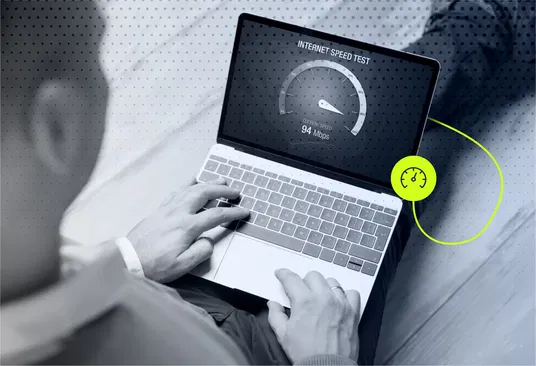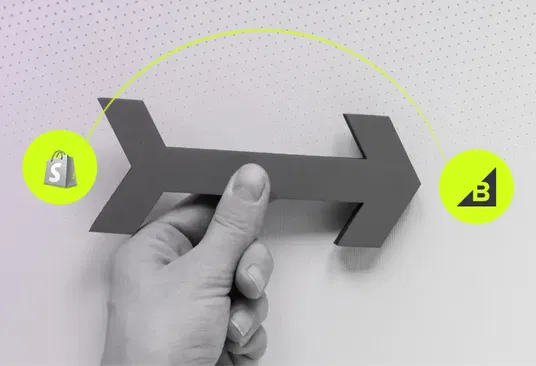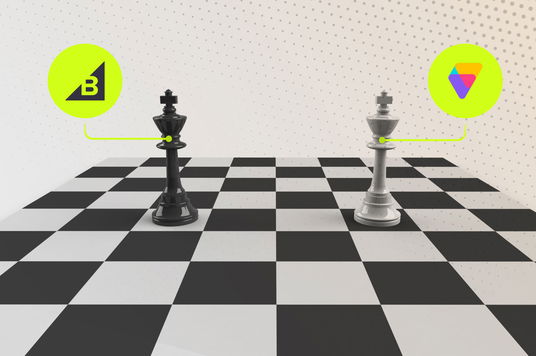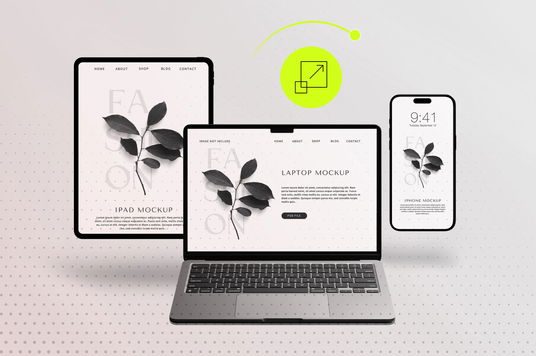Why Site Speed Makes or Breaks Beauty eCommerce Sales

- The Critical Role of Speed in Beauty eCommerce
- How Page Load Speed Impacts Beauty Conversions
- Understanding Beauty Buyer Behavior and Speed Expectations
- Core Web Vitals for Beauty eCommerce Success
- Performance Optimization Tips for Skincare eCommerce
- Reducing Time to First Byte on Skincare Stores
- Speed Audit Checklist for Beauty eCommerce Websites
- Mobile Speed Optimization for Beauty Brands
- Real-World Speed Optimization Results
- Key Takeaways
- Frequently Asked Questions
The Critical Role of Speed in Beauty eCommerce
In the fast-paced world of beauty eCommerce, every second counts. When potential customers are browsing for their next skincare routine or makeup essentials, a slow-loading website can be the difference between a sale and an abandoned cart. The relationship between site speed and conversions in the beauty industry is more critical than ever, with modern consumers expecting instant gratification and seamless shopping experiences.
Beauty shoppers are particularly impatient when it comes to website performance. They're often browsing during quick breaks, comparing products across multiple sites, or making impulse purchases. A delay of just a few seconds can send them straight to a competitor's faster-loading store. This makes performance optimization tips for skincare ecommerce not just a technical consideration, but a crucial business strategy.
"A 1-second delay in page response can result in a 7% reduction in conversions. For beauty brands with high-volume sales, this translates to significant revenue loss." - Google Web Performance Research Team
The beauty industry's visual nature compounds the speed challenge. High-resolution product images, color swatches, virtual try-on features, and video content all contribute to larger page sizes. However, these elements are essential for beauty eCommerce success, making optimization a delicate balance between functionality and performance.
How Page Load Speed Impacts Beauty Conversions
The page load speed impact on beauty conversions is measurable and significant. Research consistently shows that beauty eCommerce sites with faster load times achieve higher conversion rates, better user engagement, and increased customer satisfaction.
The 3-Second Rule in Beauty eCommerce
Beauty shoppers follow an even stricter version of the traditional 3-second rule. Studies specific to beauty and personal care eCommerce show that:
- 0-1 seconds: Optimal performance zone with highest conversion rates
- 1-3 seconds: Acceptable performance with minor conversion impact
- 3-5 seconds: Significant conversion drop-off begins
- 5+ seconds: Massive abandonment rates, often exceeding 70%
Beauty Brand Case Study
A leading skincare brand reduced their homepage load time from 4.2 seconds to 1.8 seconds, resulting in a 23% increase in conversions and a 31% improvement in mobile engagement rates. The optimization focused on image compression, lazy loading, and CDN implementation.
Mobile Speed Impact
With over 60% of beauty purchases now happening on mobile devices, mobile speed optimization is crucial. Beauty shoppers on mobile are even less patient, with optimal load times being under 2 seconds for maximum conversion potential.
Mobile-specific speed challenges in beauty eCommerce include:
- High-resolution product imagery loading on slower connections
- Complex product configurators and shade selectors
- Video content and virtual try-on features
- Multiple product images and zoom functionality
Understanding Beauty Buyer Behavior and Speed Expectations
Beauty consumers have unique browsing patterns that make site speed even more critical. Unlike other eCommerce categories, beauty shoppers often engage in extensive product research, comparison shopping, and visual evaluation before making purchases.
The Beauty Shopping Journey
A typical beauty shopping session involves:
- Discovery Phase: Browsing multiple product categories and brands
- Research Phase: Reading reviews, watching tutorials, comparing ingredients
- Evaluation Phase: Using virtual try-on tools, checking shade matches
- Decision Phase: Final product selection and checkout
Each phase requires fast-loading pages to maintain engagement. Slow speeds at any point can derail the entire journey, sending customers to competitors with better-performing sites.
"Beauty shoppers visit an average of 3.2 different websites before making a purchase. The fastest-loading site typically wins the sale." - Beauty eCommerce Consumer Behavior Study, 2024
Impulse Purchase Behavior
The beauty industry thrives on impulse purchases, particularly for trending products, limited editions, and seasonal items. These spontaneous buying decisions are extremely sensitive to site speed:
- Flash sales and limited-time offers require instant page loads
- Social media traffic expects immediate product access
- Influencer-driven purchases have zero tolerance for delays
- Mobile browsing during commutes demands quick loading
Core Web Vitals for Beauty eCommerce Success
Core Web Vitals for beauty ecommerce are Google's key metrics for measuring user experience, and they're particularly important for beauty brands due to their visual-heavy content and competitive landscape.
Largest Contentful Paint (LCP)
LCP measures how quickly the main content loads. For beauty eCommerce, this is typically the hero product image or main banner. Optimal LCP for beauty sites should be under 2.5 seconds.
Beauty-specific LCP optimization strategies:
- Optimize hero product images with next-gen formats (WebP, AVIF)
- Implement critical CSS for above-the-fold content
- Use preload hints for key product images
- Optimize font loading for product titles and descriptions
First Input Delay (FID)
FID measures interactivity, crucial for beauty sites with complex product selectors, shade pickers, and virtual try-on tools. Target FID should be under 100 milliseconds.
Improving FID for beauty eCommerce:
- Minimize JavaScript execution time for product configurators
- Use web workers for complex shade-matching algorithms
- Implement lazy loading for non-critical interactive elements
- Optimize third-party scripts (reviews, chat widgets, analytics)
Cumulative Layout Shift (CLS)
CLS measures visual stability, preventing unexpected layout shifts that can frustrate users trying to select products or shades. Target CLS should be under 0.1.
CLS optimization for beauty sites:
- Reserve space for product images and videos
- Use aspect ratio boxes for dynamic content
- Avoid inserting content above existing elements
- Optimize font loading to prevent text shifting
Performance Optimization Tips for Skincare eCommerce
Skincare eCommerce sites face unique performance challenges due to ingredient-heavy content, before/after imagery, and detailed product information. Here are targeted performance optimization tips for skincare ecommerce that deliver measurable results.
Image Optimization Strategies
Images typically account for 60-70% of a skincare site's total page weight. Effective optimization includes:
- Format Selection: Use WebP for product images, AVIF for hero images where supported
- Responsive Images: Implement srcset for different device sizes
- Lazy Loading: Load images as users scroll, prioritizing above-the-fold content
- Compression: Maintain quality while reducing file sizes by 40-60%
- CDN Delivery: Serve images from geographically distributed servers
Pro Tip: Skincare Image Optimization
For skincare brands, implement progressive JPEG loading for before/after images. This allows users to see a low-quality preview immediately while the full-resolution image loads, maintaining engagement during the loading process.
Content Delivery Network (CDN) Implementation
CDNs are essential for skincare brands serving global markets. Benefits include:
- Reduced server response times across different regions
- Improved reliability and uptime
- Better handling of traffic spikes during product launches
- Enhanced security features
Database and Server Optimization
Skincare sites often have complex product catalogs with detailed ingredient information. Optimization strategies include:
- Database indexing for ingredient searches
- Caching strategies for product recommendations
- Server-side rendering for critical content
- API optimization for product filtering
Reducing Time to First Byte on Skincare Stores
Time to First Byte (TTFB) is the time between a user's request and when the first byte of data is received. For skincare eCommerce, reduce time to first byte on skincare stores is crucial for maintaining user engagement during the critical first moments of site interaction.
Server Response Optimization
Optimal TTFB for skincare stores should be under 200ms. Key optimization areas include:
- Server Location: Choose hosting providers with servers close to your target audience
- Server Resources: Ensure adequate CPU, RAM, and bandwidth for peak traffic
- Database Optimization: Index frequently queried product attributes
- Caching Layers: Implement multiple levels of caching
Application-Level Optimizations
Skincare-specific TTFB improvements:
- Cache product ingredient data and compatibility information
- Optimize skin type and concern filtering queries
- Pre-generate popular product combination pages
- Use edge computing for personalized recommendations
TTFB Monitoring for Skincare Brands
Monitor TTFB across different product categories, as ingredient-heavy pages often load slower than simple product listings. Set up alerts for TTFB spikes during product launches or promotional periods.
Speed Audit Checklist for Beauty eCommerce Websites
Regular speed audits are essential for maintaining optimal performance. This comprehensive speed audit checklist for beauty ecommerce websites covers all critical areas that impact loading times and user experience.
Technical Performance Audit
Monthly Speed Audit Checklist
- ✓ Run Google PageSpeed Insights for key pages
- ✓ Test Core Web Vitals across product categories
- ✓ Analyze mobile vs desktop performance gaps
- ✓ Check image optimization and format usage
- ✓ Review third-party script impact
- ✓ Monitor CDN performance and cache hit rates
- ✓ Test checkout flow speed and reliability
- ✓ Verify virtual try-on tool performance
Beauty-Specific Audit Points
Focus areas unique to beauty eCommerce:
- Product Image Performance: Test loading times for high-resolution product galleries
- Shade Selector Speed: Measure response times for color picker tools
- Video Content: Audit tutorial and demo video loading performance
- Review System: Check speed of user-generated content loading
- Search Functionality: Test ingredient and product search response times
Performance Monitoring Tools
Essential tools for ongoing speed monitoring:
- Google PageSpeed Insights: Core Web Vitals and optimization suggestions
- GTmetrix: Detailed performance analysis and historical tracking
- WebPageTest: Advanced testing with different locations and devices
- Lighthouse: Comprehensive auditing including accessibility and SEO
- Real User Monitoring (RUM): Actual user experience data
Mobile Speed Optimization for Beauty Brands
With mobile commerce driving the majority of beauty sales, mobile speed optimization requires special attention. Beauty shoppers on mobile expect instant access to product information, reviews, and purchasing options.
Mobile-First Optimization Strategies
Key approaches for mobile speed optimization:
- Progressive Web App (PWA) Implementation: App-like performance with web accessibility
- Accelerated Mobile Pages (AMP): Lightning-fast loading for content pages
- Touch-Optimized Interfaces: Reduce interaction delays and improve responsiveness
- Offline Functionality: Cache key product information for offline browsing
Mobile Image Optimization
Mobile-specific image strategies for beauty brands:
- Implement adaptive image sizing based on screen resolution
- Use progressive JPEG for product galleries
- Optimize thumbnail loading for product listings
- Implement smart cropping for different aspect ratios
"Mobile users abandon beauty sites 40% faster than desktop users when pages load slowly. Optimizing for mobile isn't optional—it's essential for survival." - Mobile Commerce Research Institute
Real-World Speed Optimization Results
These case studies demonstrate the tangible impact of speed optimization on beauty eCommerce performance and revenue.
Case Study 1: Premium Skincare Brand
Results Summary
- Page Load Time: Reduced from 5.2s to 1.9s
- Conversion Rate: Increased by 34%
- Mobile Sales: Improved by 42%
- Bounce Rate: Decreased by 28%
This premium skincare brand focused on optimizing their product detail pages, which contained extensive ingredient information and multiple high-resolution images. Key optimizations included:
- Implementing lazy loading for ingredient details
- Compressing product images without quality loss
- Optimizing the virtual skin analysis tool
- Streamlining the checkout process
Case Study 2: Mass Market Beauty Retailer
A large beauty retailer serving millions of customers monthly achieved remarkable results through comprehensive speed optimization:
- Homepage Load Time: Improved from 3.8s to 1.4s
- Product Page Speed: Reduced from 4.1s to 1.7s
- Revenue Impact: $2.3M additional monthly revenue
- Customer Satisfaction: 23% improvement in user experience scores
Their optimization strategy included implementing a robust CDN, optimizing their product recommendation engine, and streamlining their mobile checkout flow. The focus on beauty personal care eCommerce development services proved crucial in achieving these results.
Key Takeaways
Essential Speed Optimization Takeaways for Beauty eCommerce
- Speed Directly Impacts Revenue: Every second of delay can cost 7% in conversions for beauty brands
- Mobile Performance is Critical: Over 60% of beauty purchases happen on mobile devices
- Core Web Vitals Matter: Google's metrics directly affect search rankings and user experience
- Image Optimization is Essential: Product images account for 60-70% of page weight in beauty eCommerce
- Regular Audits Prevent Issues: Monthly speed audits help maintain optimal performance
- TTFB Under 200ms: Fast server response times are crucial for first impressions
- Beauty-Specific Features Need Optimization: Virtual try-on tools and shade selectors require special attention
- CDN Implementation is Non-Negotiable: Global content delivery significantly improves load times
Frequently Asked Questions
1. What is the ideal page load time for beauty eCommerce sites?
Beauty eCommerce sites should aim for load times under 2 seconds on desktop and under 3 seconds on mobile. However, the optimal target is under 1.5 seconds for maximum conversion potential, especially for mobile users who represent the majority of beauty shoppers.
2. How do virtual try-on tools affect site speed?
Virtual try-on tools can significantly impact site speed due to their resource-intensive nature. To minimize impact, implement lazy loading, use efficient algorithms, and consider progressive enhancement where basic functionality loads first, followed by advanced features.
3. Which images should be prioritized for optimization on beauty sites?
Prioritize hero product images, category page thumbnails, and above-the-fold content. These images have the most immediate impact on user experience and Core Web Vitals scores. Product gallery images can be lazy-loaded to improve initial page performance.
4. How often should beauty brands conduct speed audits?
Conduct comprehensive speed audits monthly, with weekly monitoring of key metrics during high-traffic periods like product launches or sales events. Implement continuous monitoring for critical pages like checkout and product detail pages.
5. What's the ROI of speed optimization for beauty brands?
Beauty brands typically see 15-35% increases in conversion rates after comprehensive speed optimization. For a brand generating $1M monthly revenue, this translates to $150,000-$350,000 in additional monthly revenue, making speed optimization one of the highest-ROI investments available.
Ready to Choose the Right Development Partner?
Speed optimization for beauty eCommerce requires specialized expertise in both technical performance and industry-specific challenges. Our team understands the unique requirements of beauty brands, from optimizing high-resolution product imagery to ensuring virtual try-on tools load instantly.
We've helped dozens of beauty and personal care brands achieve lightning-fast load times while maintaining the rich, visual experiences their customers expect. From Core Web Vitals optimization to mobile performance enhancement, we handle every aspect of speed optimization.
About 1Center
1Center is a leading eCommerce development agency specializing in beauty and personal care brands. Our team of certified developers, designers, and performance specialists has delivered successful beauty eCommerce projects across platforms including Shopify Plus, BigCommerce, Adobe Commerce, and headless solutions. We combine deep technical expertise with beauty industry knowledge to create stores that load instantly and convert visitors into customers.
Our beauty personal care eCommerce development services include comprehensive speed optimization, ensuring your brand delivers the fast, seamless experiences modern beauty shoppers demand.
Written byPublished June 15, 2025
1Center


